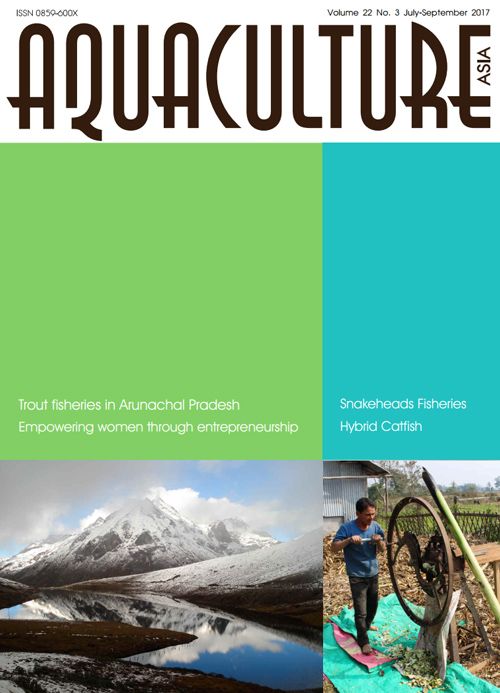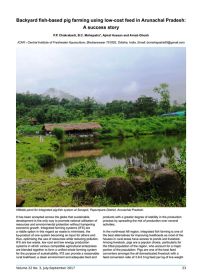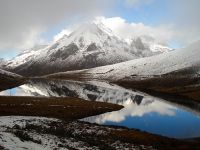Aquaculture Asia Magazine, July-September 2017
13 November 2017 | 15896 views | .pdf | 8.08 MB | Culture-based fisheries, Freshwater finfish, Gender, Genetics and Biodiversity, Inland aquaculture, Nutrition and feeding, India

- Editorial: Regional network on culture-based fisheries and stock enhancement.
Simon Wilkinson - Trout fisheries in the uplands of Arunachal Pradesh: Resources and opportunities.
Deepjyoti Baruah, K. Kunal, D. Sarma, A.K. Singh, Kabang Kamut and P.K. Thungon - Empowering young Indian women through entrepreneurship development: opportunities and constraints.
Vibha Lohani, Bonika Pant and Tarang Kumar Shah - A view on murrel (snakeheads) fisheries in India.
B. Laxmappa - Hybrid catfish Clarias batrachus x Heteropneustes fossilis produced by farmers in West Bengal, India.
Subrato Ghosh - Backyard fish based pig farming using low-cost feed in Arunachal Pradesh: A success story.
P.P. Chakrabarti, B.C. Mohapatra, Ajmal Hussan and Arnab Ghosh - NACA Newsletter
Creative Commons Attribution.





